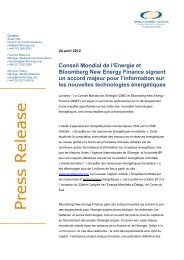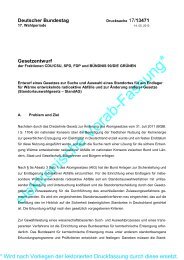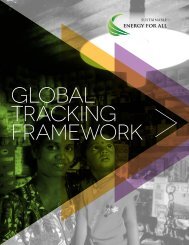Performance of Generating Plant - World Energy Council
Performance of Generating Plant - World Energy Council
Performance of Generating Plant - World Energy Council
Create successful ePaper yourself
Turn your PDF publications into a flip-book with our unique Google optimized e-Paper software.
14<strong>Performance</strong> <strong>of</strong> <strong>Generating</strong> <strong>Plant</strong>: Managing the Changes Executive Summary <strong>World</strong> <strong>Energy</strong> <strong>Council</strong> 2007Figure 6 Spectrum <strong>of</strong> integrated risk managementSpectrum <strong>of</strong> Integrated Risk M anagem entEmergencyresponse planRoadm ap toRecovery TMRiskI.D .ReportRiskMngt.RiskEval.Stage 1Stage 2Crisis m anagem ent/communication planStage 3Businessrecovery planTimeRisk Identification& ManagementIncident M anagem entBusiness Continuity M anagem entThe thrust is therefore towards a pro-activeapproach to sustaining and enhancing businessperformance, rather than fire fighting anddefence in preventing corporate failures. Thisapproach focuses on a positive contribution.Therefore, corporate governance, and as suchalso enterprise or integrated risk management,includes opportunity management.Risk management is not an ‘add on’ activity,but an integral part <strong>of</strong> business managementwith the ultimate objective <strong>of</strong> minimising thevariability and unpredictability <strong>of</strong> expectedperformance outcomes.Risk Identification, Evaluation and Managementare therefore a process directed at decreasingthe likelihood <strong>of</strong> an unpredictable outcome, andalso the relative impact <strong>of</strong> an unpredictableevent, should it occur. Despite our best effortsthough, some events can be either beyond ourcontrol (floods or earth quakes) or cannot befully managed (fire).Such events require some form <strong>of</strong> predeterminedemergency processes and businessrecovery strategies, with the ultimate objective <strong>of</strong>re-establishing business capability within theshortest possible time and with minimum humancasualty, financial and sustainability impact onthe organisation and the environment. It istherefore advisable to clarify risk managementstrategy up front to ensure that the riskassessment and management process coverboth prevention / reduction <strong>of</strong> exposure andrecovery processes post an event. This is thepoint at which risk assessment and riskmanagement strategy can be brought togetherin the risk assessment model.When undertaking risk assessment, it is criticalto have a good understanding <strong>of</strong> the business aswell as the environment within which it operates.Some important lessons have been learnt fromoperational experience:• Most non-operational risks emanate fromthat interface and if not timely identifiedand managed, like during contractingphase, could result in significant exposureat a later stage when changes in theenvironment occur.• Operational risks are <strong>of</strong>ten seen as easyto manage, thus the amount <strong>of</strong> time spenton understanding the full systems impact<strong>of</strong> either the risk or the solution are <strong>of</strong>tentoo little, resulting in unintendedoutcomes.• Risk management is integral to any job. Itcannot be done by someone else.With the above in mind it is useful to identify socalled ‘flash points’ or ‘hot spots’ (areas <strong>of</strong>interface in the supply chain) from where it islikely that key risks may arise. Some examples<strong>of</strong> such flash points are:• Regulatory Interface• Suppliers• Fuel Delivery• Trading













